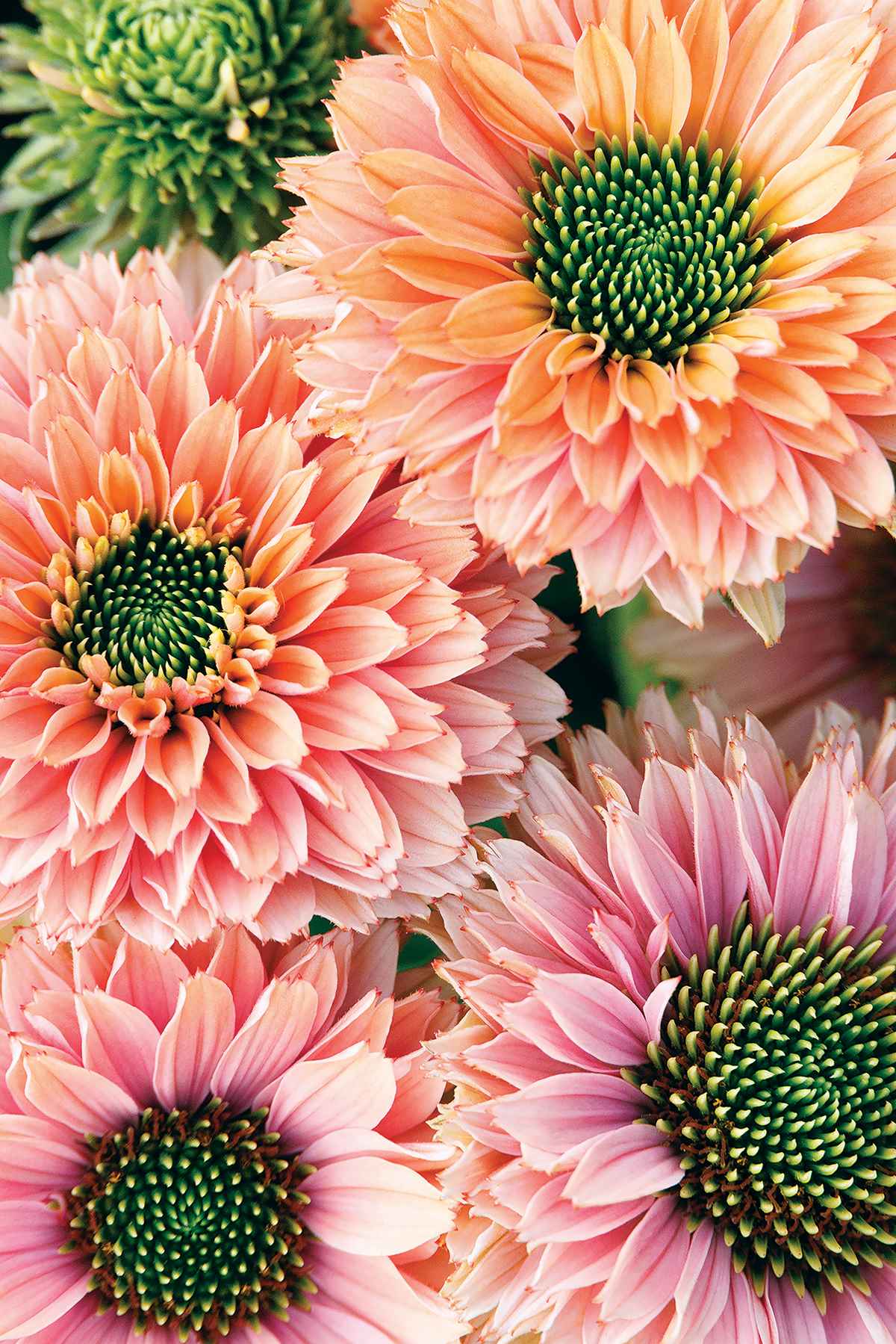The popularity of coneflowers seems boundless. The iconic native plant with star appeal has become the emblem of the pollinator gardening movement, and the cultivars just keep coming, with expanding colors, habit and forms. Which are worth adding to your garden?
A bumpy road to success
There are many reasons to grow Echinacea, aka purple coneflowers. With direct sun and well-drained soil, they’ll offer large summer blooms with nectar for bees and butterflies and cones that persist into winter — if the goldfinches don’t get them first.
It’s not surprising, then, that decades ago, breeders saw the possibilities in this showy prairie plant boasting a trademark cone at the center of an outsized, sometimes fragrant, daisy-type flower and a long bloom period. The two marketplace stalwarts of purple coneflower were E. purpurea ‘Magnus,’ a lilac-leaning pink, and ‘White Swan.’
‘Magnus’ was named Perennial Plant of the Year in 1998.
“If you go back 25-30 years ago, there were essentially two Echinacea available, and they were both purpurea,” said Dan Heims, co-owner of Terra Nova Nurseries Inc., a wholesale nursery in Canby, Oregon that is a leader in Echinacea breeding. “They were offered in a gallon pot typically growing 3–4 feet tall and had 3–5 flowers per plant. That was it.”
Times have certainly changed. Responding to rising demand, breeders have created a dazzling array of double-flowered, dwarf, and bi-color varieties in red, yellow, orange, raspberry, white, green and combinations thereof.
The coneflower explosion was kicked off in the early aughts with ‘Razzmatazz’, a double-flowered selection from the Netherlands in 2003 and Echinacea ‘Art’s Pride’ Orange Meadowbrite™ the first orange -rayed coneflower, introduced by Dr. James Ault through the Chicago Botanic Garden’s breeding program in 2004.
Grace Dinsdale, founder of Blooming Junction, a retail nursery in Cornelius, Oregon, said of ‘Art’s Pride’, “It was a huge uproar across the horticultural community; it was a great color breakthrough. Then the breeding took off ─ everybody started working on them,” she said. “There’s been an amazing proliferation of colors, heights and types. It’s been wonderful to watch. At this point the competition is intense.”
Since 2004, the wholesale operation of Blooming has grown and/or trialed about 157 varieties, Dinsdale said, with 55 active varieties as of December 2024.
However, not all varieties performed alike, especially in the early years of breeding. Many gardeners were disappointed with some of the first new echinaceas. Heims said they rushed to try these exciting new colors, often paying “crazy prices” to find they failed to overwinter due to weak necks or basal growth, or they succumbed to highly contagious “aster yellows.” Soon growers and gardeners became leery of experimenting with the latest new Echinacea. How have breeders mastered this hurdle?
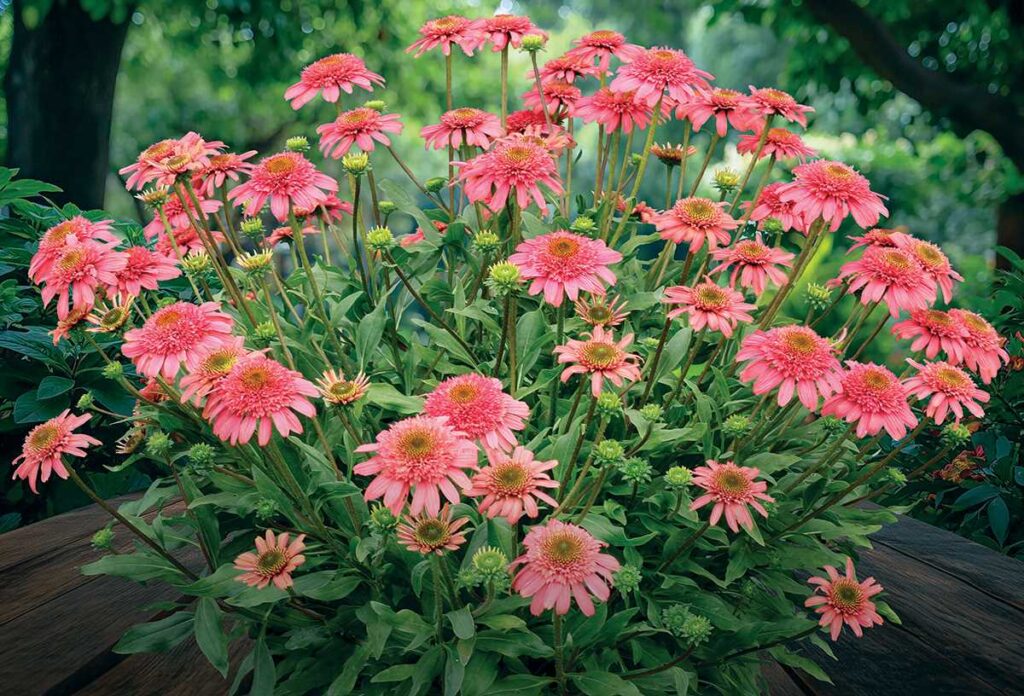
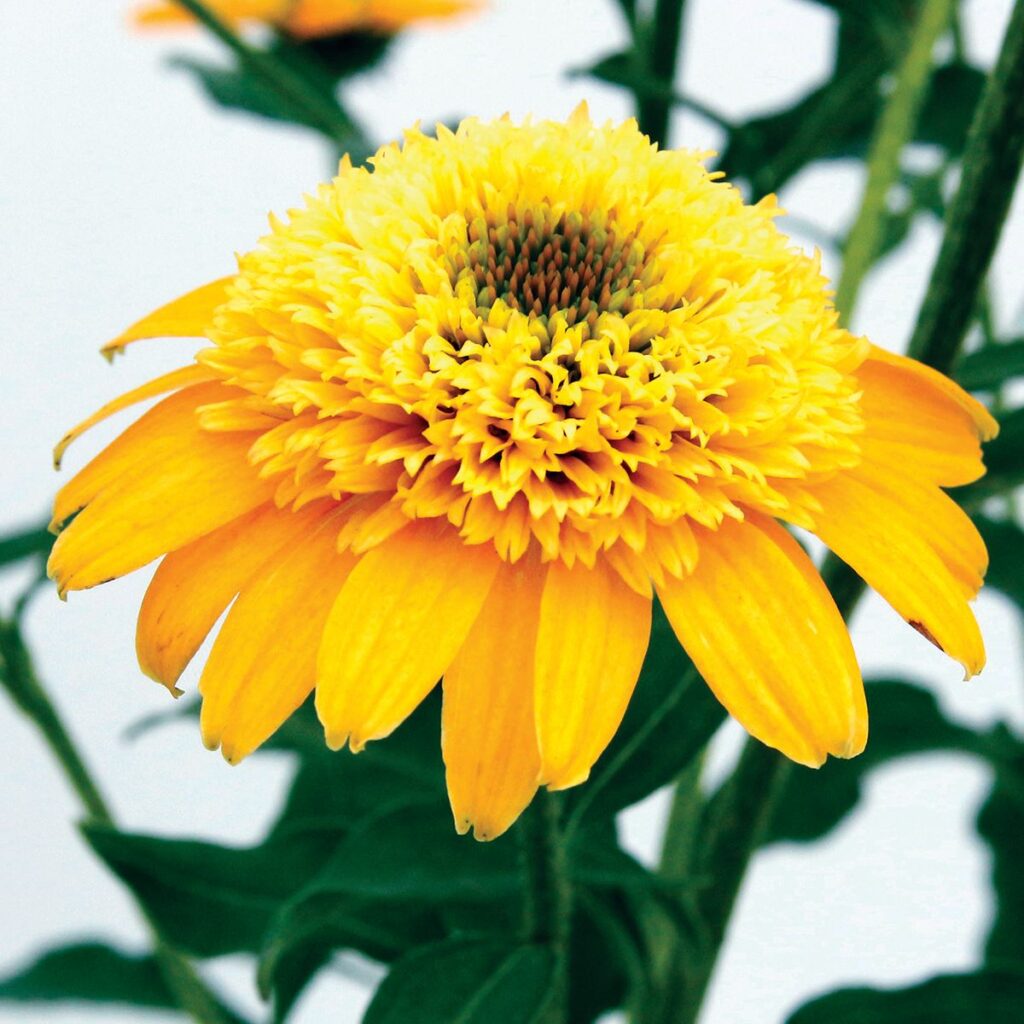
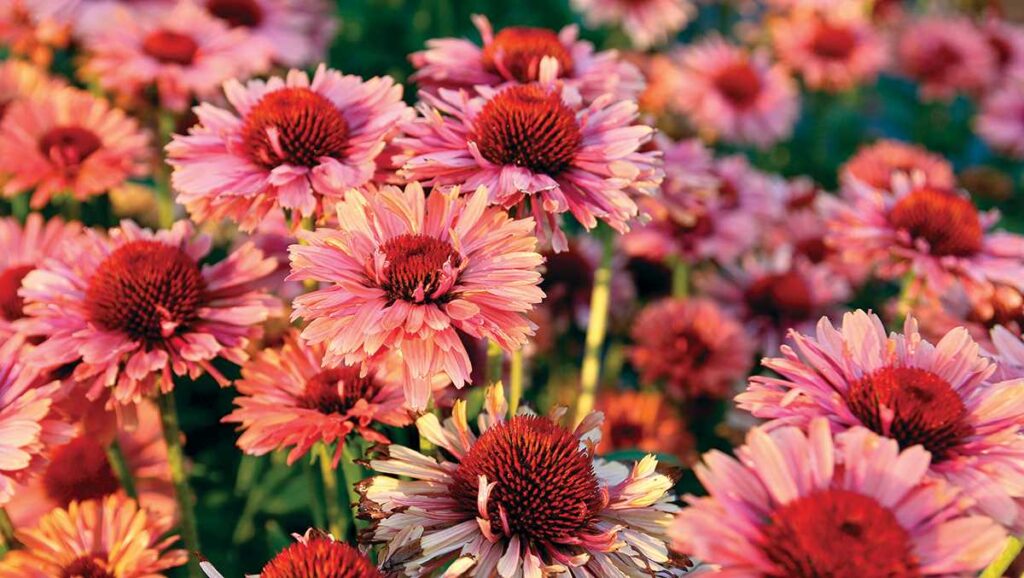
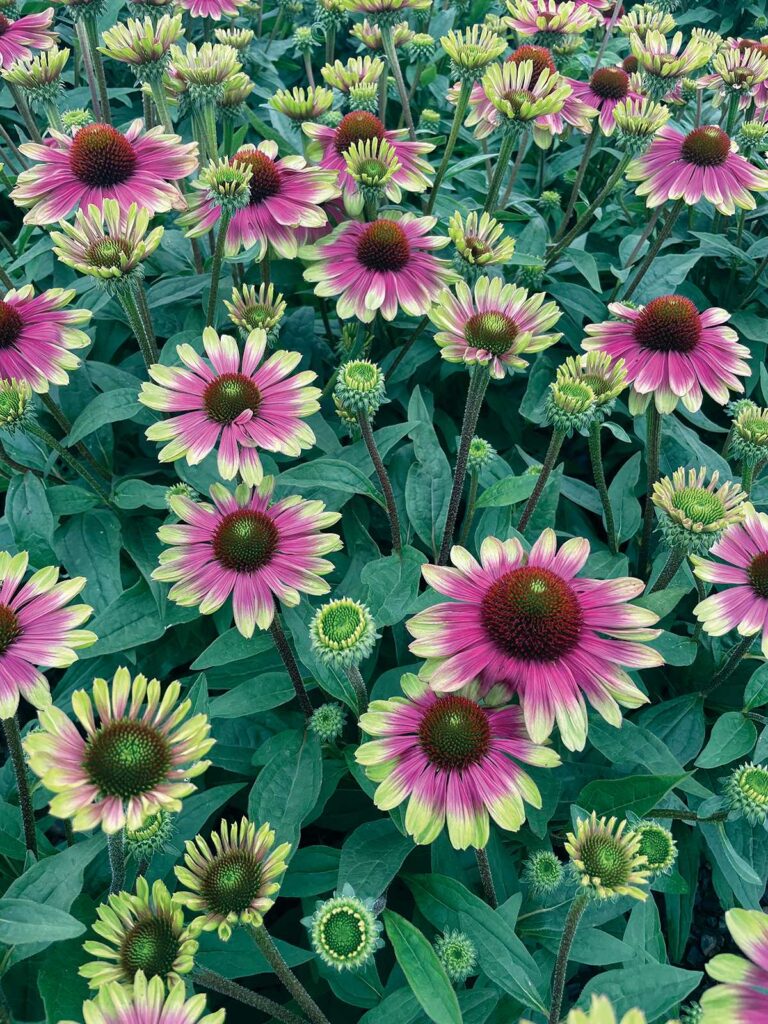
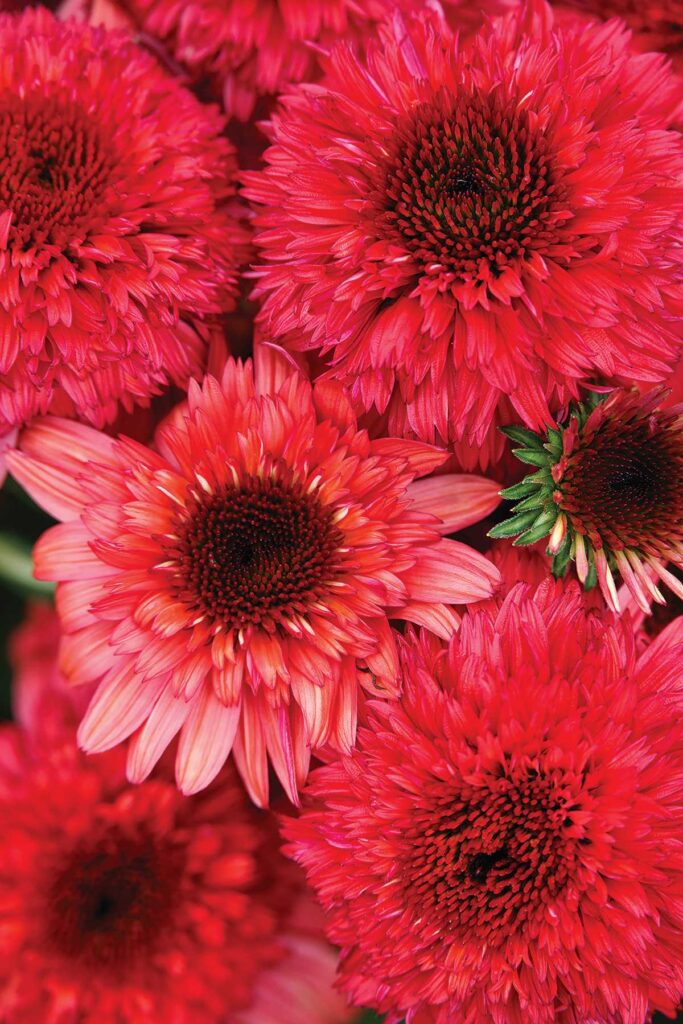
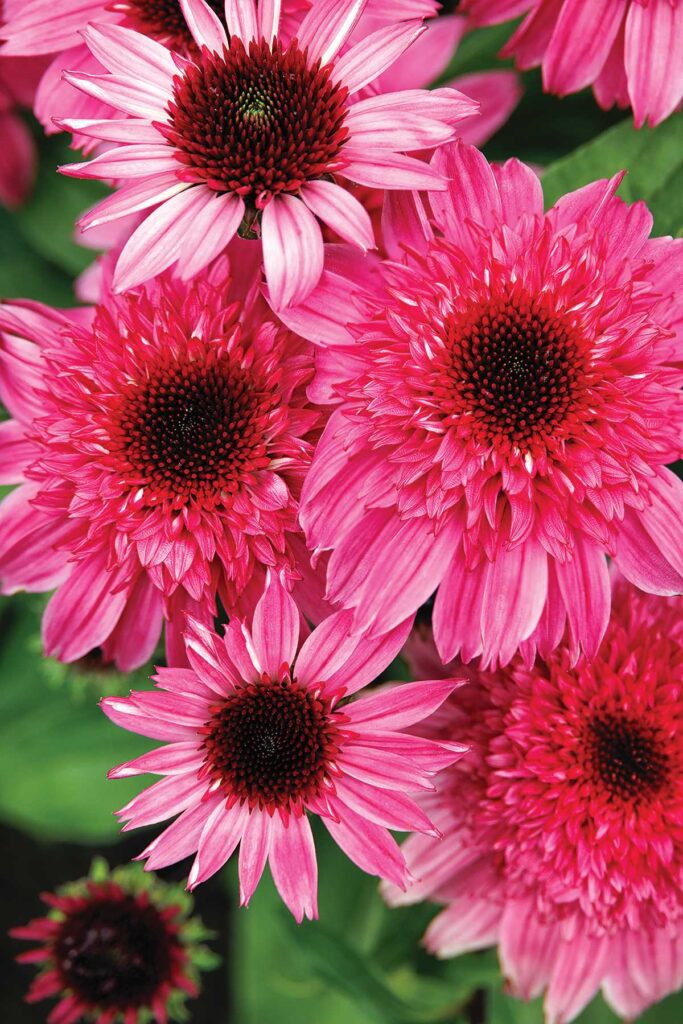
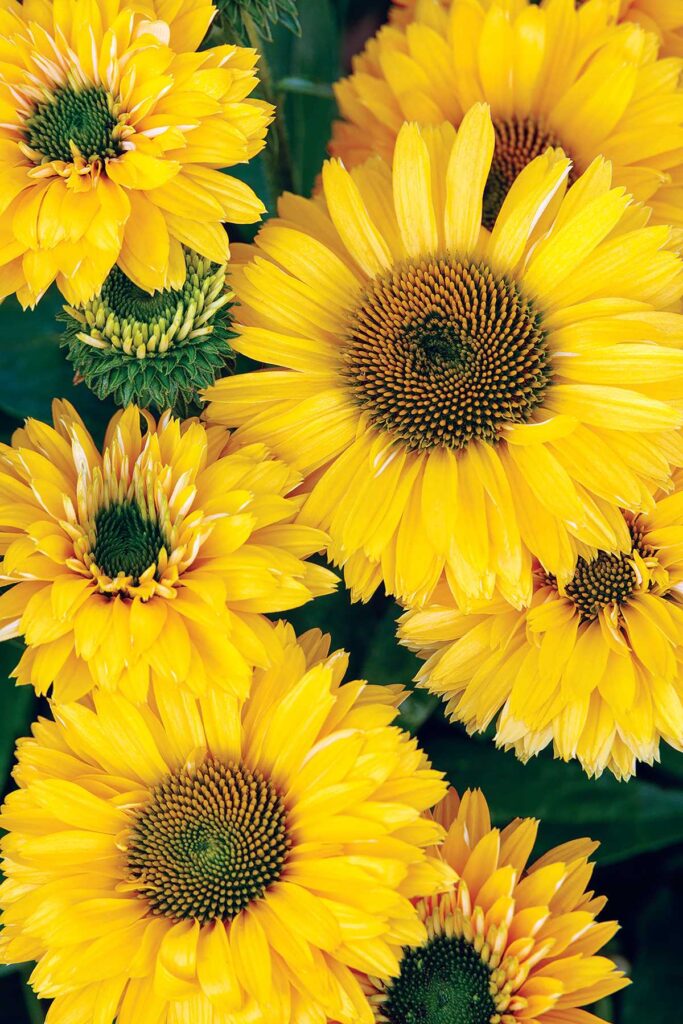
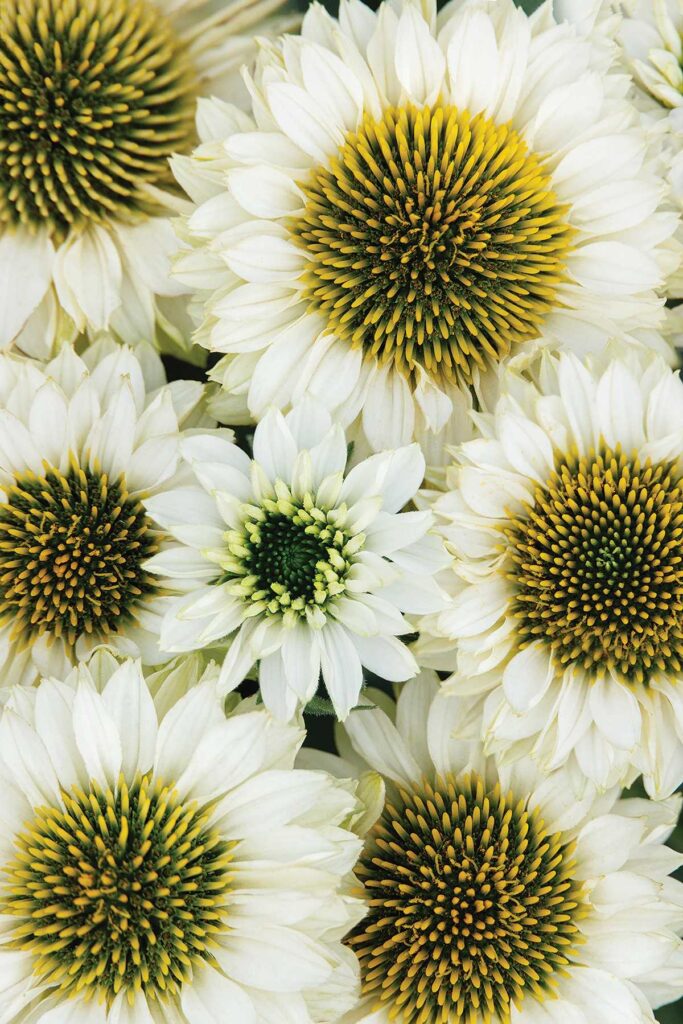
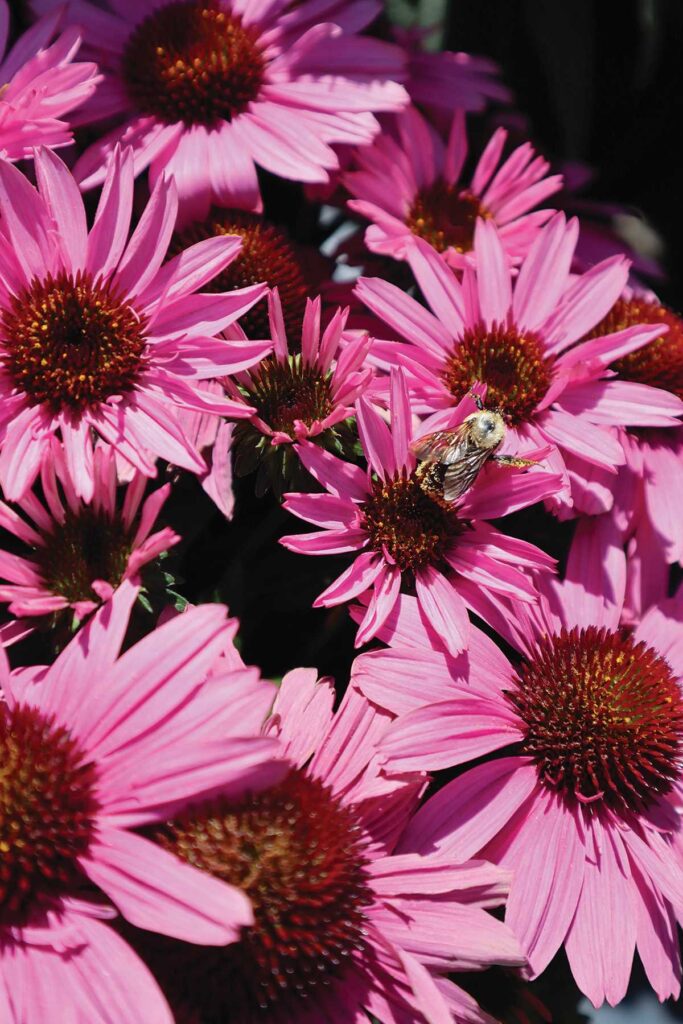
Modern-day Echinacea varieties
Thinking of the first rounds of breeding, “The plants were frankly horrible compared to what they are today,” said Heims.
The introduction of a mix of Echinacea species (there are nine in all) into the breeding helped create stronger, longer-blooming, more resilient and disease-resistant plants, Heims said.
Some gave resistance to aster yellows, others improved the habit or flower power, like Echinacea tennesseensis, which enabled the first cultivars to produce sprays rather than single stalks, Heims said.
Terra Nova’s 12-person breeding committee is continually trialing new varieties. “By using different species, we can give a range for all different purposes. We have dwarf types for the front of the border, virtually a blooming groundcover, to upright mid-landscape, and tall ones, some that even function as a cut flower at 36 inches tall.”
Among newer cultivars, Heims said, “We’ve had 100 flowers on a plant, and we’ve extended bloom until frost rather than just three weeks to a month. Now the plants are better through breeding for having more shoots, which translates to more flowers and better winter resistance.”
With the rise of double-flowered Echinacea varieties, concern rose that the fluffy blooms would fail to support pollinators. “They were sterile,” he said, “which meant they bloom like crazy and continue to bloom but have no pollen or nectar or seeds for goldfinches.”
In response, Terra Nova released ‘FRESCO Apricot,’ a double flower which retains a full cone.
Georgia Clay is the plant selections manager at Monrovia Nursery, a California wholesale nursery with its largest farm in Dayton, Oregon. She’s seen changes in what gardeners are looking for in Echinacea: showy flowers with longer bloom periods, bright bold colors, interesting new forms, plants that do not flop or need to be staked, stay compact, and have increased resistance to diseases like leaf spot and powdery mildew.
In just the last few years, Clay said, “We are seeing a color explosion with brighter and bolder flowers that are fading less throughout the season, flowers that change color throughout the lifecycle of the bloom, even the cones are adding color with bright oranges and greens. Not only are the flowers getting more colorful, but they are also getting much more plentiful. We are seeing a huge amount of flowers at once as well as plants beginning to flower earlier and continuing to flower later into the fall.”
Hot, hot hot ─ new and old favorites
At Moana Nursery in Canby, Oregon, which grows coneflowers mainly for its garden centers in northern Nevada, Joe Dula said demand remains steady, with hot colors being the most popular. In the ‘Kismet’ series, Moana is planning to offer the red, yellow and orange for 2025 as well as ‘Pow Wow Wildberry,’ a consistent top seller.
Some of Dinsdale’s favorites include ‘Flame Thrower,’ ‘Hot Papaya,’ ‘Tangerine Dream,’ the Sombrero® series, the newer SunSeekers™ series, and ‘Meadow Mama’ varieties. Don’t discount classics ‘Magnus’ and ‘White Swan,’ either, she noted. “Those still sell like crazy,” she said, partially because they can market them in smaller pots.
Georgia Clay said Monrovia is excited to offer the Sunmagic Vintage series and the SunSeekers™ series in 2025. “Every year we trial hundreds of Echinacea and these two collections really stood out. The Sunmagic series stood out for their outstanding habits — well branched and rounded even without pinching — and the flower power. They produced a large number of flowers at once and kept the show going throughout the whole summer and into the fall. The Sunseekers series stands out due to their amazing flower power and semi-double flower forms that are unlike anything else currently being offered.”
Heims called out ‘CARA MIA™ Seashell’, which he said can put out 60 flowers from a single plug, ‘DARK SHADOWS™ Wicked’ for vivid pink flowers against dark stems, ‘Sweet Sandia’ a pink/green bicolor, the reliable KISMET® series, and compact ‘DELIGHTFUL Gold’ for containers, while holding a soft spot for ‘FRESCO™ Apricot’s unique form and color.
With all of these new varieties, there will be plenty of showy and better-performing options for gardeners to look forward to.
Erica Browne Grivas is an award-winning journalist and gardener pushing zone boundaries in Seattle, Washington. She can be reached at EBGrivas@Gmail.com.

